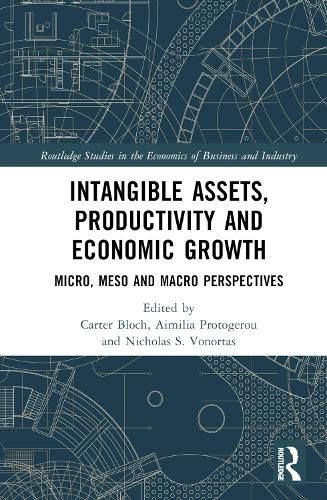Readings Newsletter
Become a Readings Member to make your shopping experience even easier.
Sign in or sign up for free!
You’re not far away from qualifying for FREE standard shipping within Australia
You’ve qualified for FREE standard shipping within Australia
The cart is loading…






This book advances our knowledge on intangibles and their role in productivity growth, presenting a unique multi-level perspective. It encompasses micro, meso, and macro approaches that build upon firm-, industry-, and country-level data and introduces novel layers of analysis.
A variety of empirical instruments are used in the book, such as a large-scale international survey, input-output analysis, register data, etc., thus displaying fresh, comparative evidence for Europe, the USA, China, Korea, and Japan. The book also examines the subject within the global value chain context, which is one of the most relevant phenomena of recent decades, and assesses cross-country trends, drawing on a unique industry-level database of intangible assets, based on production input data from all over the world.
The book offers new insights on how to measure intangibles, how they contribute to productivity growth, and how policy can help foster intangibles investments and growth. It will therefore be of great interest to scholars, researchers, and advanced students in the fields of economic growth, innovation, technology, and business management.
$9.00 standard shipping within Australia
FREE standard shipping within Australia for orders over $100.00
Express & International shipping calculated at checkout
This book advances our knowledge on intangibles and their role in productivity growth, presenting a unique multi-level perspective. It encompasses micro, meso, and macro approaches that build upon firm-, industry-, and country-level data and introduces novel layers of analysis.
A variety of empirical instruments are used in the book, such as a large-scale international survey, input-output analysis, register data, etc., thus displaying fresh, comparative evidence for Europe, the USA, China, Korea, and Japan. The book also examines the subject within the global value chain context, which is one of the most relevant phenomena of recent decades, and assesses cross-country trends, drawing on a unique industry-level database of intangible assets, based on production input data from all over the world.
The book offers new insights on how to measure intangibles, how they contribute to productivity growth, and how policy can help foster intangibles investments and growth. It will therefore be of great interest to scholars, researchers, and advanced students in the fields of economic growth, innovation, technology, and business management.